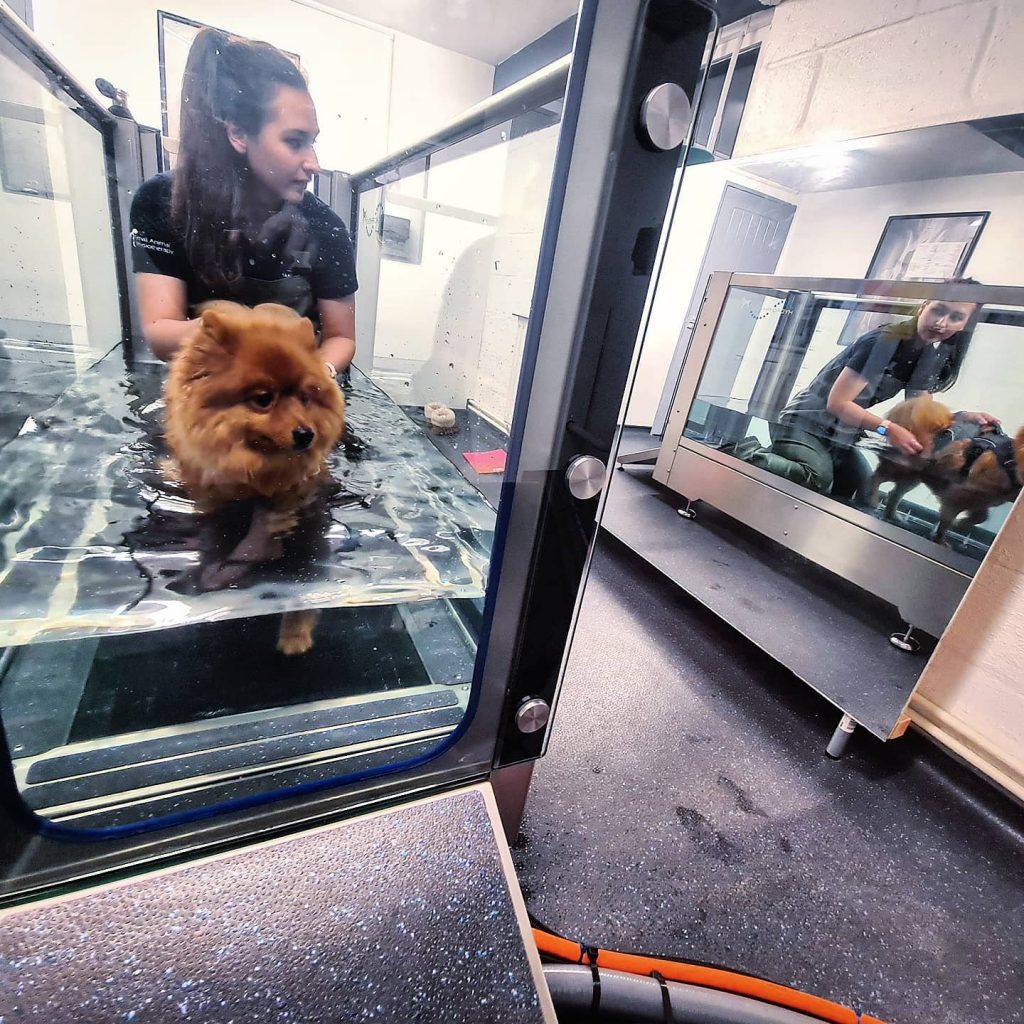The Gold Standard in Physiotherapy and Hydrotherapy for dogs
The Gold Standard in Physiotherapy and Hydrotherapy for dogs

An FCE occurs when a piece of fibrous cartilage causes a block to blood vessels to an area of the spinal cord. The fibrous cartilage originates from the soft centre of the intervertebral disc. It is commonly compared to ‘stroke’ in the spinal cord. The altered blood flow to the spinal cord causes a lack of oxygen to the neurons and they can become dysfunctional and lead to the clinical presentation associated with FCE.
Affected dogs may show signs of:
The clinical history will guide our specialist neurologists to the presumptive diagnosis of an FCE, however MRI diagnostic imaging will confirm this.
Surgery is not usually considered in the management of an FCE. Intensive Physiotherapy is the primary treatment to ensure the full recovery of your dog. Ideally in the first instance treatments will be daily.
Rehabilitation therapy is a key component in helping aid the recovery from neurological diseases. Once the vet has diagnosed your pet and completed any surgeries, our team can can step in to aid the long road to recovery.
Initial therapy may include standing exercises, as well as range of motion exercises. These are complimented with pain control and toe pinch exercises. An important part of the retraining is aquatic rehabilitation. Often, with more severe cases, one of our trained neurological hydro therapists will assist the dog whist in our underwater treadmill.
Other exercises include balance exercises, core stability and spacial resistance band walking, physio-roll balancing and home specific exercises. In the hydrotherapeutic environments, the dogs will walk and train with resistance against the water, whether walking or swimming. We also use therapeutic electrotherapies to deep-heat muscles, cryotherapy and laser therapy to aid the recovery process.
Our friendly and skilled physiotherapists are ready to help you and your dog with their rehabilitation.
The content on this page is for advice and information only and does not represent veterinary guidance or direction. Please always consult a veterinary surgeon if you are worries about your dog.